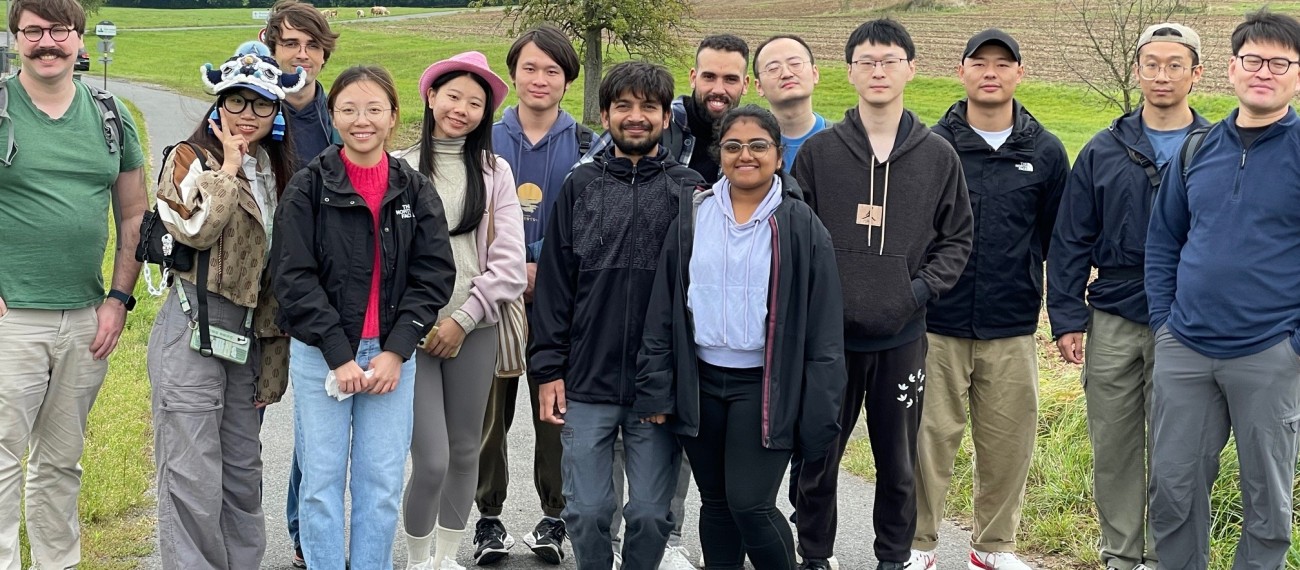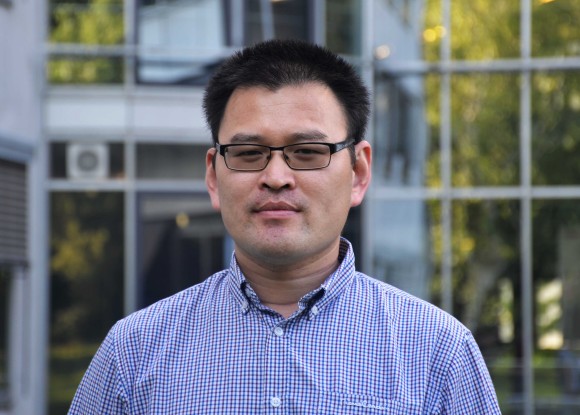Prof. Dr. Hongbin Zhang
Working area(s)
Contact
hzhang@tmm.tu-...
work +49 6151 16-23135
Work
L6|01 407
Otto-Berndt-Straße 3
64287
Darmstadt
- 08.2021 -present: Professor at Department of Materials and Geosciences, TU Darmstadt, Germany
- 04.2015 --- 07.2021: Junior Professor at Department of Materials and Geosciences, TU Darmstadt, Germany
- 01.2013 --- 03.2015: Postdoc at Department of Physics and Astronomy, Rutgers University, USA
- 08.2009 --- 01.2013: Postdoc at Peter Grünberg Institute I/IAS-1, Forschungszentrum Jülich, Germany
- 08.2006 --- 07.2009: PhD at Institute for Theoretical Solid State Physics, IFW Dresden, Germany
- 09.2003 --- 06.2006: Master at State Key Lab of Crystal Materials, Shandong University, China
- 09.1999 --- 06.2003: Bachelor at Department of Physics and Microelectronics, Shandong University, China
Brief research statement:
Once I had a stupid question: do all metals (金属 in Chinese) contain gold (金 in Chinese)? If so, why gold is reddish golden (a unique color people have been desperate for), while copper is brown and silver is shiny white? Only after more than ten years, I got to know the answer. It is because gold atoms are heavier. Or to put it in a scientific language, in gold the relativistic effects are more magnificent. Two more key concepts I learnt on that night were energy scale and spin-orbit coupling, after comparing the density of states for Cu, Ag, and Au in fcc structure.
Pity that relativistic effects mean more than spin-orbit coupling, which is just one of the terms which proportional to 1/c^2. And it is the so called Darwin term which induces the reddish golden color of gold. Nevertheless, the story began like this and has been evolving. The main phenomena which interest me (or I have been constrained to) are those caused by spin-orbit coupling, which includes
- anisotropic response of magnetic materials (magneto-crystalline anisotropy, anisotropic magnetoresistance, ...)
- topological charge/spin transport (anomalous Hall, spin Hall, ...)
- interplay of spin-orbit coupling and electronic correlations (J=1/2 insulator, ...)
I "do all kinds of experiments" using supercomputers, where the computations (preferably in parallel) are done based on density functional theory. In principle, in order to reveal the truth, we do not take any parameter as tunable, but it requires a lot of experience to find out how to avoid doing nonsense.

Error on loading data
An error has occured when loading publications data from TUbiblio. Please try again later.
-
; {{ creator.name.family }}, {{ creator.name.given }}{{ publication.title }}.
; {{ editor.name.family }}, {{ editor.name.given }} (eds.); ; {{ creator }} (Corporate Creator) ({{ publication.date.toString().substring(0,4) }}):
In: {{ publication.series }}, {{ publication.volume }}, In: {{ publication.book_title }}, In: {{ publication.publication }}, {{ publication.journal_volume}} ({{ publication.number }}), ppp. {{ publication.pagerange }}, {{ publication.place_of_pub }}, {{ publication.publisher }}, {{ publication.institution }}, {{ publication.event_title }}, {{ publication.event_location }}, {{ publication.event_dates }}, ISSN {{ publication.issn }}, e-ISSN {{ publication.eissn }}, ISBN {{ publication.isbn }}, DOI: {{ publication.doi.toString().replace('http://','').replace('https://','').replace('dx.doi.org/','').replace('doi.org/','').replace('doi.org','').replace("DOI: ", "").replace("doi:", "") }}, Official URL, {{ labels[publication.type]?labels[publication.type]:publication.type }}, {{ labels[publication.pub_sequence] }}, {{ labels[publication.doc_status] }} - […]


